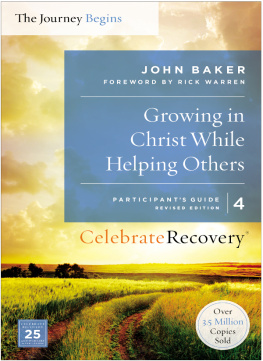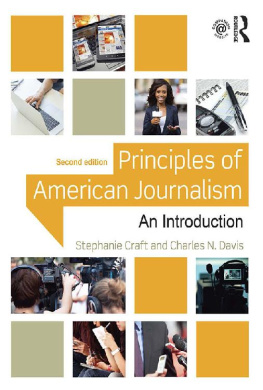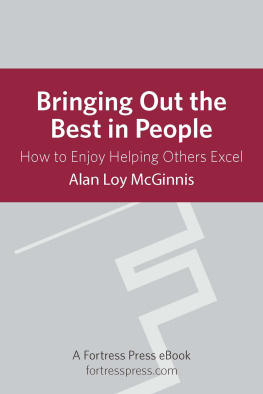Stephanie Winston - Getting Organized
Here you can read online Stephanie Winston - Getting Organized full text of the book (entire story) in english for free. Download pdf and epub, get meaning, cover and reviews about this ebook. year: 2009, publisher: Grand Central Publishing, genre: Home and family. Description of the work, (preface) as well as reviews are available. Best literature library LitArk.com created for fans of good reading and offers a wide selection of genres:
Romance novel
Science fiction
Adventure
Detective
Science
History
Home and family
Prose
Art
Politics
Computer
Non-fiction
Religion
Business
Children
Humor
Choose a favorite category and find really read worthwhile books. Enjoy immersion in the world of imagination, feel the emotions of the characters or learn something new for yourself, make an fascinating discovery.

- Book:Getting Organized
- Author:
- Publisher:Grand Central Publishing
- Genre:
- Year:2009
- Rating:3 / 5
- Favourites:Add to favourites
- Your mark:
- 60
- 1
- 2
- 3
- 4
- 5
Getting Organized: summary, description and annotation
We offer to read an annotation, description, summary or preface (depends on what the author of the book "Getting Organized" wrote himself). If you haven't found the necessary information about the book — write in the comments, we will try to find it.
Getting Organized — read online for free the complete book (whole text) full work
Below is the text of the book, divided by pages. System saving the place of the last page read, allows you to conveniently read the book "Getting Organized" online for free, without having to search again every time where you left off. Put a bookmark, and you can go to the page where you finished reading at any time.
Font size:
Interval:
Bookmark:

If you purchase this book without a cover you should be aware that this book may have been stolen property and reported as unsold and destroyed to the publisher. In such case neither the author nor the publisher has received any payment for this stripped book.
Photograph on used with permission of the California Closet Company.
Copyright 1978, 1991, 2006 by Stephanie Winston
All rights reserved.
WARNER BOOKS
Hachette Book Group
237 Park Avenue, New York, NY 10017
Visit our website at www.HachetteBookGroup.com.
First eBook Edition: April 2009
ISBN: 978-0-446-55976-8
ALSO BY STEPHANIE WINSTON
The Organized Executive
Stephanie Winstons Best Organizing Tips
Organized for Success: Top Executives and CEOs Reveal the Organizing Principles That Helped Them Reach the Top
I would like to thank the people whose confidence and encouragement were so important to me in establishing my business and writing this book: my parents, Miriam and Harry Winston; my sisters, Terry Pickett and Dinah Lovitch; and Ruth Stark, Margaret and Sheldon Klein, Shirley and Lou Winston, Marnie Winston-Macauley, and Joshua Winston.
Norma Fox, the best of friends, offered me the use of her offices at Human Sciences Press (thanks also to Dr. Sheldon Roen), where I wrote much of this book. Emily Fox Kales was always there. Sanford Schmidt was a loyal and steadfast friend.
Specific ideas used in the book were contributed by: Dinah Lovitch, gourmet cook extraordinaire, who helped me with the kitchen chapter; Faith MacFadden and close friends Sara Miles, Muriel Gelbart, Charlie Moxley, and Steve and Jenny Price, who defined the conundrums of children and family life; and students Chris Clark, Don Goalstone, Joan Masket, Marjorie Atwood Murray, Julius Shulman, and Karen Olsen.
Helpfulness above and beyond the call was offered by Michele Jaffe, Terry and George Pickett, Linda Rothschild, Phyllis Sherman, and Simon Winston-Macauley.
The organizing of the original Getting Organized was accomplished by Susan Ann Protter, literary agent and friend, and the two fine editors it was my privilege to work with: Carol Houck Smith and Sharon Morgan. This edition of Getting Organized was wonderfully refreshed by the insights and guidance of my editor Melanie Murray. And many thanks for the sharp eye of production editor Tareth Mitch.
The guiding light behind this revised edition of Getting Organized is Marnie Winston-Macauley, my cousin, friend, and colleague, who worked with me generously and brilliantly to help define and develop organizing problems and solutions for todays complicated world.
S.W.
We are living in a world that is spinning faster than evera world where it seems increasingly more difficult to keep your life in order: two-career families, extended work hours; divorced households, grown children living at home. We now must organize for a different environment.
As the world reels, sometimes past us, it is more important than ever to grab hold, to make sense of your daily routines, in order to cope with the incredibly complex environment around us.
One of the things that I have tried to do in Getting Organized is to answer two different sets of questions about being organized. The purpose of the original book was, for the first time, to offer readers a nuts-and-bolts how-to: How do I take control of information overload, arrange a hectic schedule, organize my books, clear out my closets? What are some innovative ideas for getting the most from available space? For these purposes, Getting Organized was and is a straightforward reference, similar to a dictionary or an encyclopedia. Consult the table of contents or extensive index for the pages that deal with your problem and work from there.
The second set of questions, more personal and more pervasive in its effect, was, Why is my life so confused? Why do I always seem to be in the midst of clutter? Why do I have trouble seeing my feet? And why is this always happening to me?
Getting Organized looks at some of the reasons why you lose your way and at some of the hidden triggers that seem to block your ability to take control of your life, as well as the basic attitudes involved. And, most important, it offers new ways to think about how to use your time, how to use your space, and how to give your life some consistent form.
Well, although the basic issues have not changed, we have seen enormous changes in the way people live their lives. You might think that the explosion of technology helped everyone become more organized, but I find the opposite is often true. If anything, some of these lifestyle changes challenge our ability to organize even more, because there seems to be so much more to do, so much less time to do it in, and, frequently, fewer hands to do all of the tasks that seem to be necessary. And perhaps women, in particular, have had to shoulder the biggest burden.
So while the principles havent changed, while the basic uses of time, space, and information are still essentially the same as they were when Getting Organized was first written, the applications have changed, sometimes dramatically. The purpose of this revised Getting Organized is to take the principles that were so successful in the original, to look at them in new ways, and, without losing anything of the old, to apply them to the new situations that we see ourselves in today.
Doing it all. The traditional womans work is never done syndrome has not died, but it has changed shape. How does a womanor, more accurately, the familydo it all, get it all in, without buying into false notions of being a superwoman?
The home office. This is particularly significant now that many people, both men and women, have opted to work at home, either part-time or full-time. An office at home for many is often no longer a simple corner where you pay your bills and organize your grocery list, but rather a fairly sophisticated professional situation. This office-at-home involves its own organizing patterns and brings with it some special problems.
Computer-age technology and electronic gadgetry. When your living room begins to look like an arcade, its time to gain some mastery over high tech.
The modern family. Most mothers are working, and two-career couples are the norm. The single parent has emerged as a major factor. Suddenly you have unusual family groupings. Its not uncommon today for children to be living one week with Mom and Stepdad, the next week with Dad and Stepmomthe bottom line being that simply organizing the logistics of all this moving around among nontraditional family groupings is a new challenge.
Variations of living together. Homes are changing; the kinds of places we call home is changing. Even married couples today have to organize more complex living and financial arrangements than in the past. Grown children are coming back home when they find that they can no longer afford their own private dwellings.
Negotiating terms of living together becomes even more delicate in the case of cohabiting couples and adult roommates. How do they, perhaps with their children, manage to live together without falling over each other?
Mobilitymoving, scaling up and scaling down. People are on the move more than they ever were before. At one time, people had one or two, perhaps three, homes in their lifetimes. Now, between shifting marriages, cohabitation, people living longer and moving into retirement communities, and various other alternatives, we find that space and the use of space are changing. We are scaling down, scaling in, scaling up. How do we organize around those changing needs?
Font size:
Interval:
Bookmark:
Similar books «Getting Organized»
Look at similar books to Getting Organized. We have selected literature similar in name and meaning in the hope of providing readers with more options to find new, interesting, not yet read works.
Discussion, reviews of the book Getting Organized and just readers' own opinions. Leave your comments, write what you think about the work, its meaning or the main characters. Specify what exactly you liked and what you didn't like, and why you think so.






